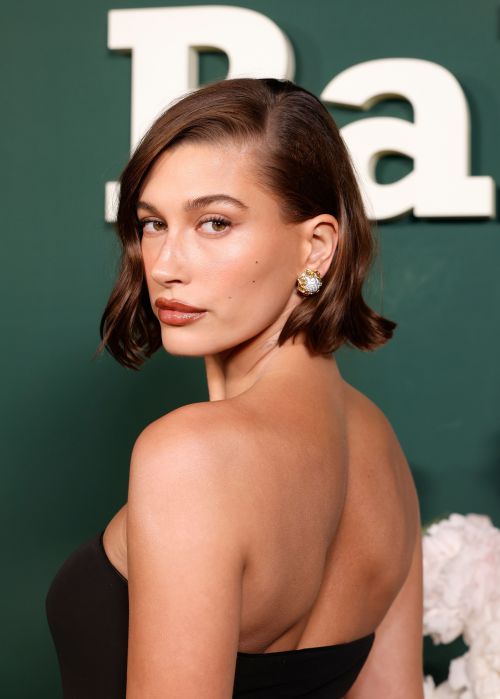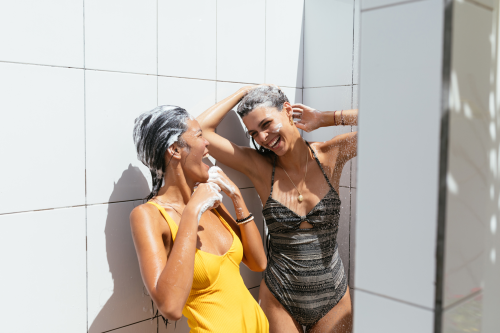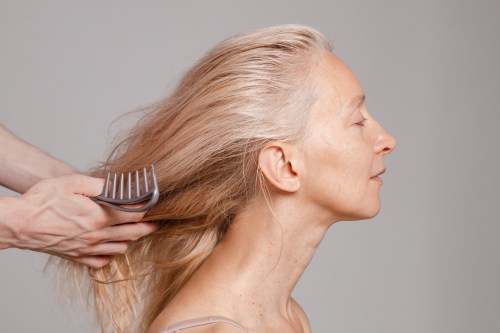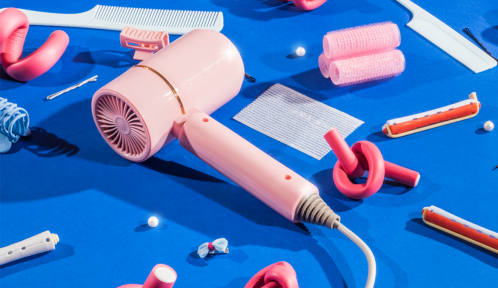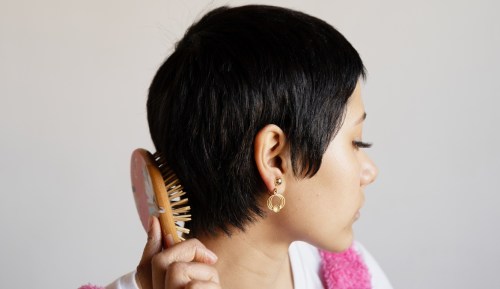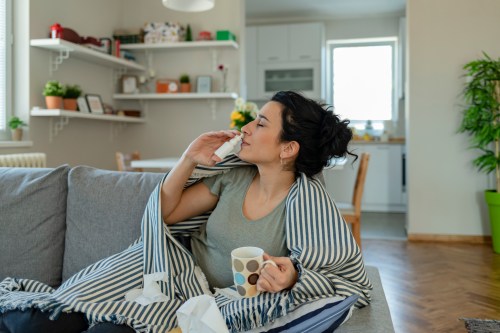If you’re a frequent visitor of beauty blogs or the drugstore aisle, you’re likely familiar with the idea of the “no-poo method.” In the last few years, the phrase has begun to dominate the beauty conversation as we’ve become more and more aware of what we should—and shouldn’t—be putting on our scalps. But aside from having some vague idea that “no-poo” is short for “no-shampoo,” many of us (myself included), may not be well-versed in what this new phenomenon means. If I’m being totally honest, I’ve Googled the term “What is the no-poo method?” more times in the last few years than I, a beauty editor, would care to admit.
To find out once and for all what it actually means to trade your shampoo for no-poo, I consulted celebrity hairstylist Kendall Dorsey and DevaCurl Educator and DevaChan Certified Curl Specialist Jessica Fitzpatrick, who were more than happy to clear up misconceptions and help define it for me. Read on for everything you’ve ever wondered about no-poo, and how you can say goodbye to shampoo for yourself.
What exactly is the “no-poo method”?
As mentioned, no-poo is a play on the phrase “no shampoo” (which, duh, I guess) but what it actually means is slightly more nuanced than that. “No-poo, in the modern world, stands for a ‘no-lather cleansing system,’ says Dorsey. “If you have really curly hair, if you have wavy hair, or if you have hair that requires a ton of moisture, no-poo won’t have any factors that will strip it with the detergents that a stronger-lather shampoo would have.”
The products are sulfate- and sodium-free, using sort of “heavy cream cleansing system” to lift the dirt and impurities from your hair (the old like dissolves like theory), versus using detergents, which strip your scalp and strands. “Some of the ingredients you might find in your normal shampoos actually compare to cleansers you’d find in your cleaning supplies,” says Fitzpatrick. “So it can be really harsh on your strands and on the skin as well.”
When it comes to making the decision to opt for the #latherfreelife, it all comes down to moisture. “Some of the benefits of using a cleansing system with no lather would be to maintain the moisture balance of your hair,” explains Dorsey. If you have curly hair, for example, and you’re styling it on a daily basis, you need that extra moisture to protect the integrity of the strands. “Those with curly hair need all of that moisture—especially like for the ends.” Ends of hair aren’t just the oldest, most brittle hair on the head, they’re also exposed to the same cold, dry weather that the skin is and the same reaction occurs.
No-poo products work by helping to balance the pH of your scalp. Many have a pH of 4.5—the same as that of healthy skin—and don’t require pH yo-yoing that many traditional shampoos and conditioners do. Shampoos with intense cleansing agents are meant to remove all of the gunk from strands, and do so with a higher pH lather, which can also dry hair out. “We’ve removed those harsh ingredients, those sulfate-based ingredients, and replaced them with gentle botanical cleansers and a balance of hydrating ingredients.”
How can you get started with the no-poo method?
I’ll be real with you: When you start things out, no-poo is going to take some getting used to. Your scalp and your strands will go through a transition, and at first it might feel a bit, well, weird. “I tell my clients to cleanse the scalp as often as they feel they need it, and in the beginning that might be every second or third day because they’ve been going in and essentially stripping all of this moisture off of the scalp,” explains Fitzpatrick.
As a result, the scalp will produce extra oils and then it has to recalibrate itself again. “So when you’re going in with no-poo, the scalp is still over producing because that’s what it’s been doing. No-poo is going to balance that out,” she says. According to her, give the process 4 to 6 weeks to get comfortable with the no-suds situation and then build a new habit for yourself.
But simply put: “Find what works for you,” says Fitzpatrick. “In the beginning, I strongly encourage that people find a routine that consists of both a cleanser and a conditioner.” Because there is no lathering aspect, it’s on you to scrub your scalp properly. “Start with your fingertips at the scalp and then work your way through the hair, so it’s going to help remove any kind of dirt, any impurities that are on the scalp, and through the hair,” says Dorsey.
Who can use the no-poo method?
“I think every hair type benefits from a silicone- and sulfate-free routine whether you’re wearing it straight or wearing it curly,” says Fitzpatrick. Take note: A solid shampoo to break up the product residue can help in your good-hair-day plan every once in a while. If you’re interested in giving the no-poo method a go, here’s what to know.
If you’ve got curly hair: The conversation surrounding no-poo often centers around curly hair because spirals tend to need more moisture than straight strands. Not only is it harder for oil from the scalp to make its way to the tip of a curl (think about rolling a ball down a spiral staircase versus a straight one), curly hair is frequently styled more between washes, which in some cases can dry it out. When washing, no-poo can dissolve much of the gunk in products while leaving curls moisturized.
If you’ve got wavy hair: “It’s all about the moisture and it’s all about maintaining the integrity of the hair,” says Dorsey, who’s a proponent of no-poo for waves. “Because you’re cleansing it on a day-to-day basis, or [even] three times a week, you want to make sure that the hair has proper balance.” A lathering shampoo can dry out hair, while a no-poo can help to keep beach waves soft.
If you’ve got super straight hair: The no-poo method is a go for straight hair, but with one caveat: “If you have really, really fine hair you should stay away,” says Dorsey. “Super straight hair I would stay away from it.”
What type of no-poo products should you use?
The Internet offers a lot of homemade no-poo solutions, but Dorsey strongly advises against attempting to cleanse your hair with anything other than actual hair products. “My theory behind DIY’s is stay away,” he says. Instead, he suggests Oribe Cleansing Crème ($46) and Deva Curl No-Poo ($11). A quick myth-buster on some of the internet’s favorite natural no-poo products:
Baking soda and apple cider vinegar: Because the pH of baking soda is 9 and apple cider vinegar is between 2 and 3, it can actually wind up disrupting the pH of your scalp and strands, which is exactly what the no-poo method is meant to avoid in the first place.
Coconut oil: Two words for anyone looking to lather they’re head in coconut oil: Greasy. Scalp. Plus, one other slightly gnarly thing that you may not have thought about. “If you use coconut oil in a hundred degree weather, it’s designed for cooking. So you’re standing outside, you’re at a baseball game with coconut oil on your hair and you’re there for 6 hours, you hair is literally cooking for that 6 hours in that 100 degrees,” says Dorsey. Yikes. “If you use something that’s formulated and been broken down, the molecules are a lot smaller and able to penetrate into your head instead of sitting on the hair shaft, then it’s a different system.”
And there you have it, folks. Now excuse me while me and my curls say goodbye to the “sham” in our “shampoo” once and for all.
Psst… if you’re dealing with bacne, it may have something to do with the ingredients in your shampoo. And here’s how much shampoo you should actually be using — your wallet will thank you later.
Sign Up for Our Daily Newsletter
Get all the latest in wellness, trends, food, fitness, beauty, and more delivered right to your inbox.
Got it, you've been added to our email list.

